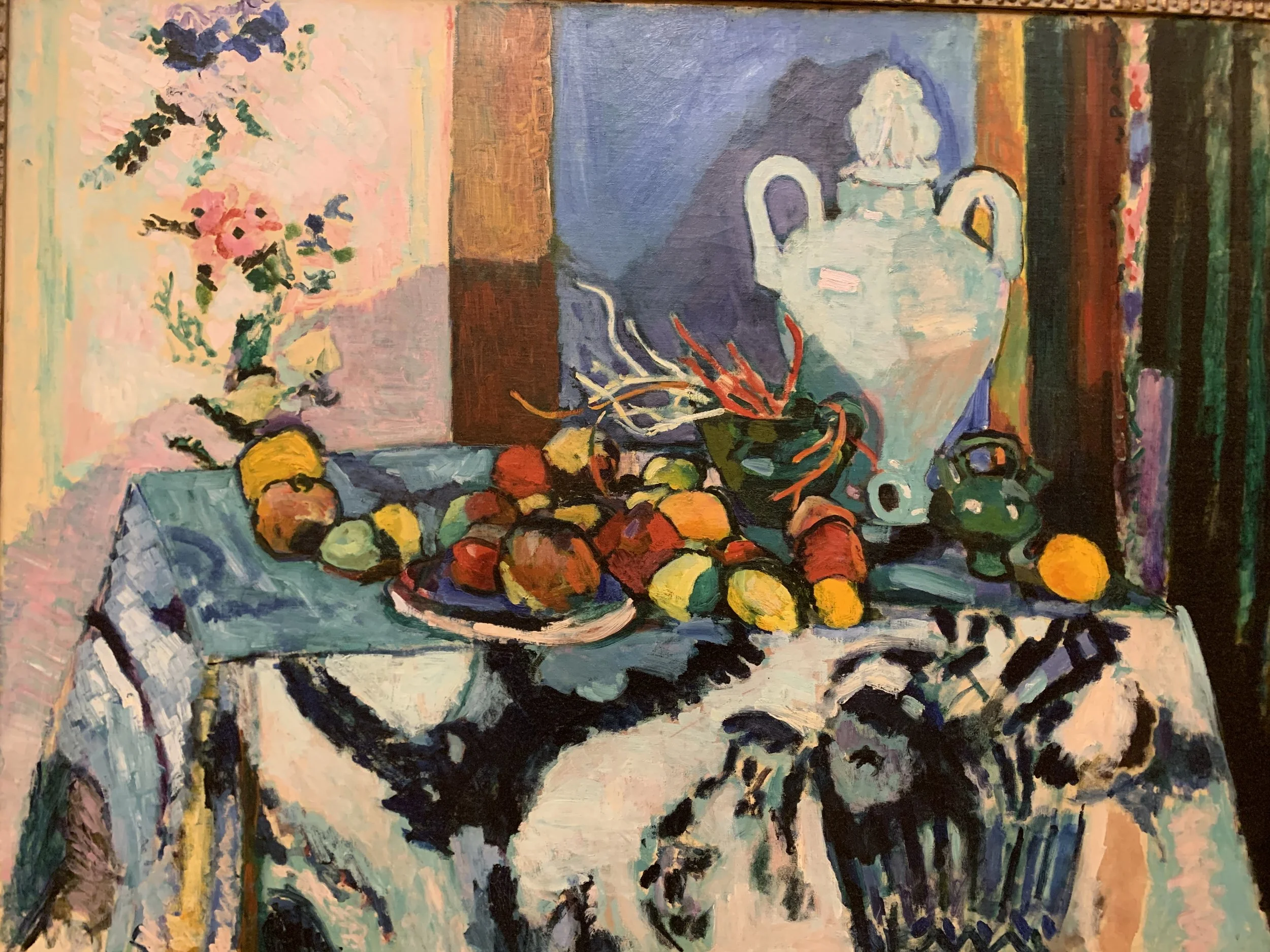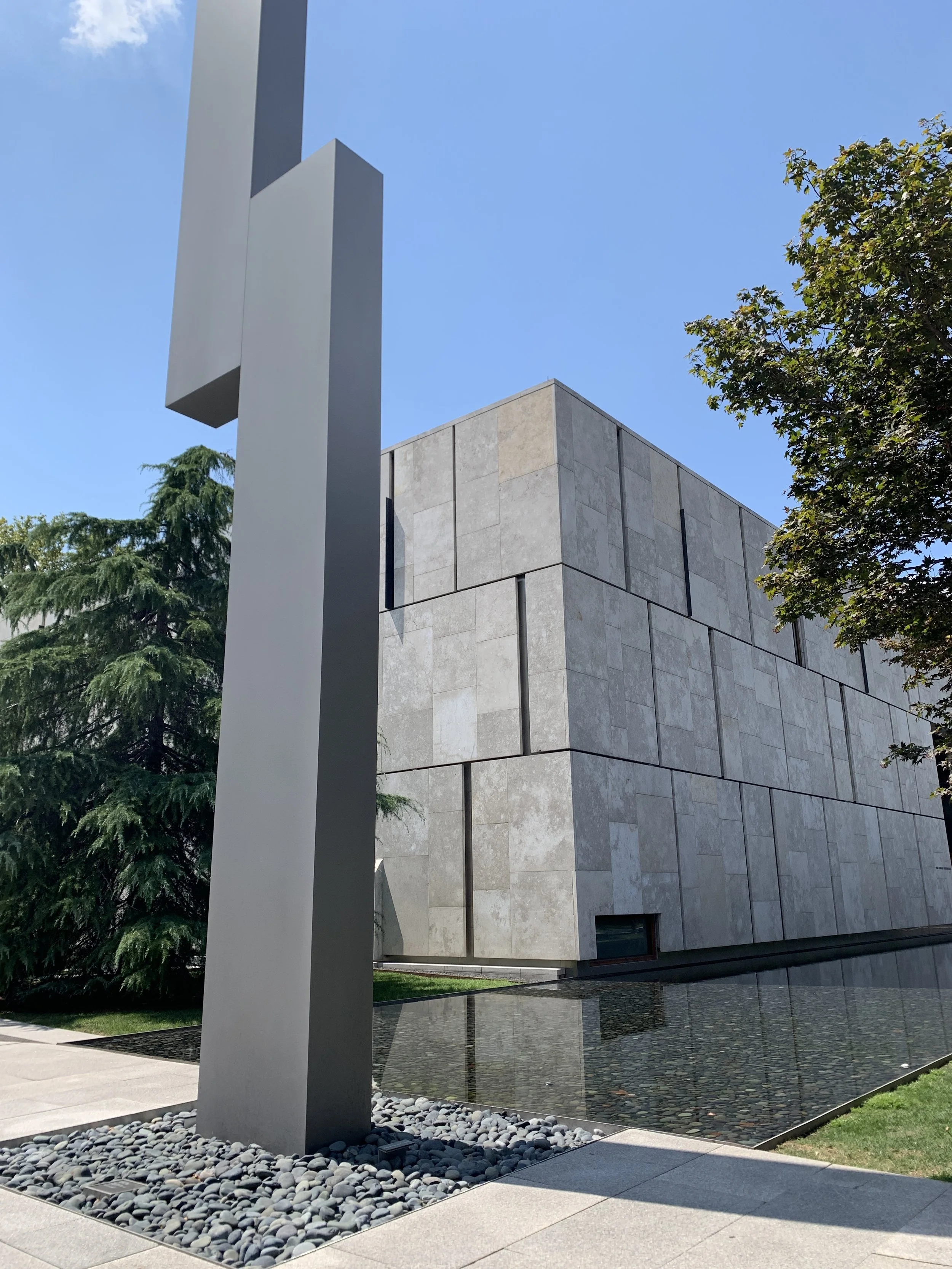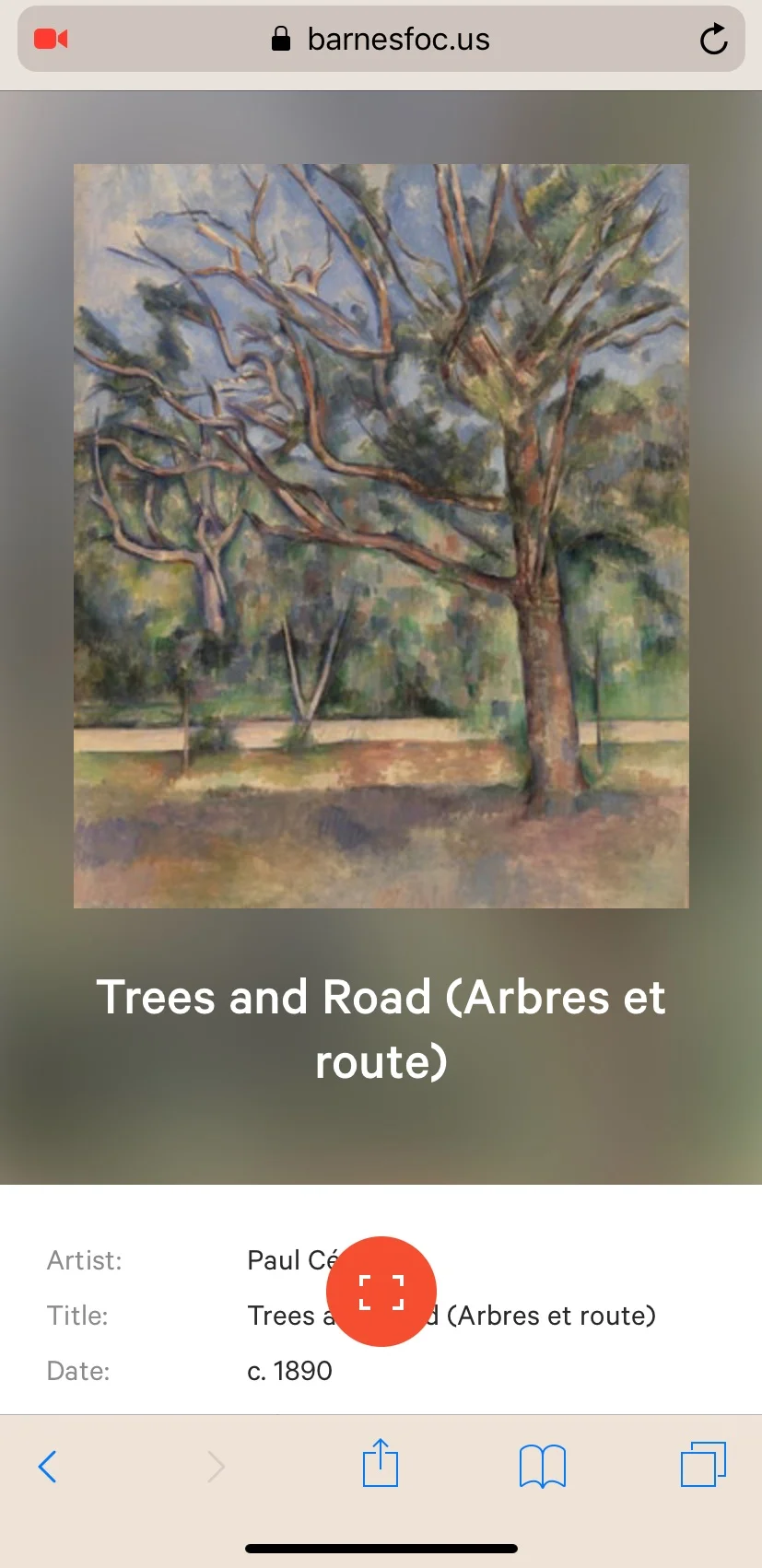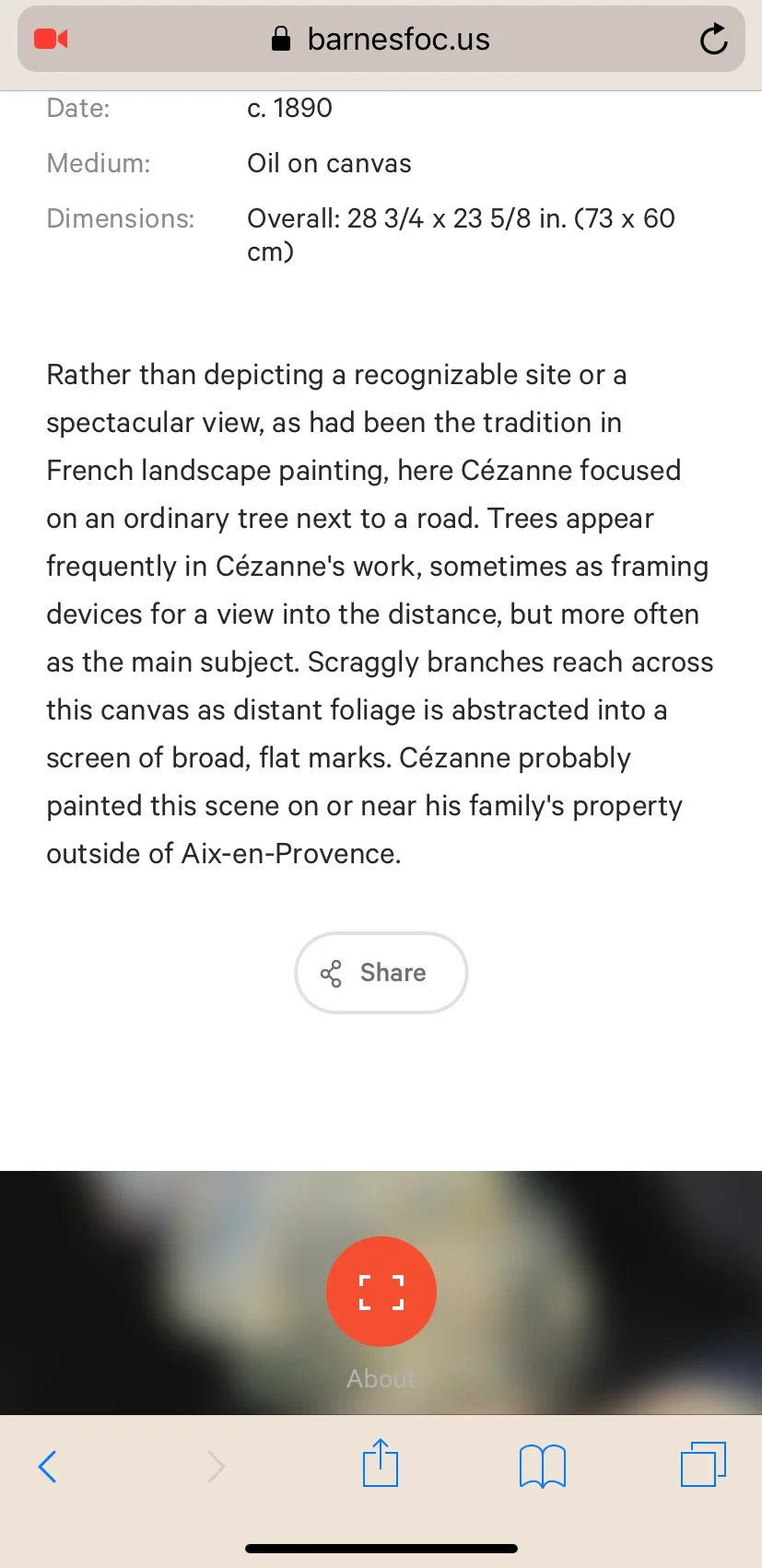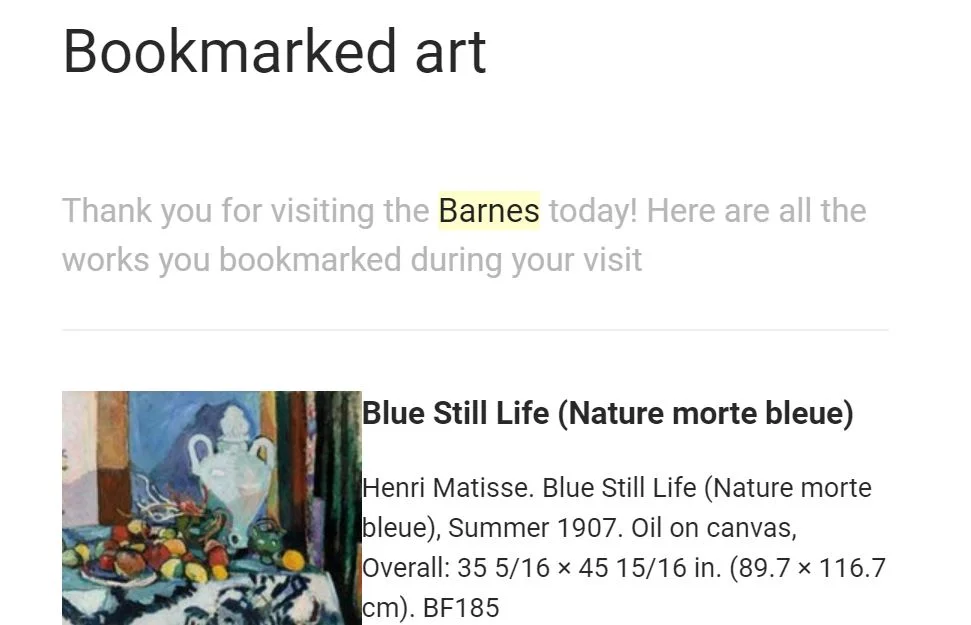The exterior of the Barnes Foundation. Image credit: Author
A summer long weekend in Philadelphia is inspiring by the many art experiences the city has to offer. Of the museums I visited I was most impressed by both the collection and quality of experience at the Barnes Foundation. The museum has a noteworthy collection of impressionist, post-impressionist, and early modernist artwork, which includes the world’s largest holdings of paintings by Renoir and Cézanne.
My experience was heightened by the addition of a new image recognition software that the museum began piloting several months ago. The program, called Barnes Focus, was funded by the Knight Center for Digital Innovation in Audience Engagement. Web-based, it is very simple and intuitive to use on a phone or tablet. Once you enter the web address (barnesfoc.us) on your browser and allow it access to the device’s camera, the program uses image recognition technology to identify artwork, providing the visitor with the title, artist, year, and description of the piece. I used it throughout my visit, and as a trained musician, learned a lot about the breadth of creativity and range of visual artwork from the impressionist period. If you enter your email address on the website, you will receive an email at the end of your visit with images to all the artworks that you “bookmarked” and looked at while using the program.
A screenshot of Barnes Focus.
Image credit: Author
Aside from increasing visitor engagement in the museum space, this technology also allowed for a more authentic experience viewing the art as the owner’s original display was not obstructed by captions or descriptions. As I learned during one of the pop-up talks given by a member of the museum’s Art-Team, throughout Dr. Albert Barnes’s life he displayed his collection in a purposeful way in what he called “ensembles.” Each work of art was placed in a particular way based on the principals of light, line, color, and space. He focused on how the works were visually presented rather than placing them in chronological order or by artist. The museum has maintained the same order that Dr. Barnes established at his home, and the collection remains free of any signage or image descriptions. The program Barnes Focus allows the visitor to experience the artwork as Barnes intended, while easily learning about the art. The Barnes’s website also has an interesting feature as part of the digital gallery, that allows viewers to see the collection based on colors, lines, light, and space—similar to the way that Barnes did his own ensemble curation.
An ‘ensemble’ in the museum. Image credit: Author
The Barnes Foundation is committed to fostering an engaging experience for its visitors, demonstrated by the development of the software and the Art-Team’s short 5-10-minute art talks. I went to two of these sessions, each well attended, where a member of the Art Team gave a description of one artwork. With an iPad in hand, a member of the eight-person team discussed the work in depth, explaining its history and placement in the collection. As they talked, they showed visual images on the iPad of other works, both from and outside of their collection. It was a simple usage of technology but was highly effective in heightening the visitor’s experience.
A screenshot of the email sent after the visit. Image credit: Author
These short pop-up art chats complimented the experience of using Barnes Focus in a very effective way. Although Barnes Focus is very educational and interactive for the visitor, it lacks dialogue and any personal connection. By activating the spaces with members of the Art Team the museum is maintaining human contact, encouraging discussion and a deeper connection to the space.
References:
Mondon, Marielle. “After a decades-long no-photo policy, the Barnes Foundation launches digital gallery.” Philly Voice. November 12, 2017. Accessed August 28, 2019. https://www.phillyvoice.com/after-decades-long-no-photo-policy-barnes-foundation-launches-digital-gallery/
Salisbury, Stephan. “Art Team is Barnes Foundation’s new twist on visitor ‘engagement’.” The Philadelphia Inquirer. March 1, 2018. Accessed August 28, 2019. https://www.inquirer.com/philly/entertainment/arts/barnes-foundation-art-team-for-visitor-information-20180301.html
The Barnes Collection. Barnes. Accessed August 28, 2019. https://www.barnesfoundation.org/whats-on/collection.

